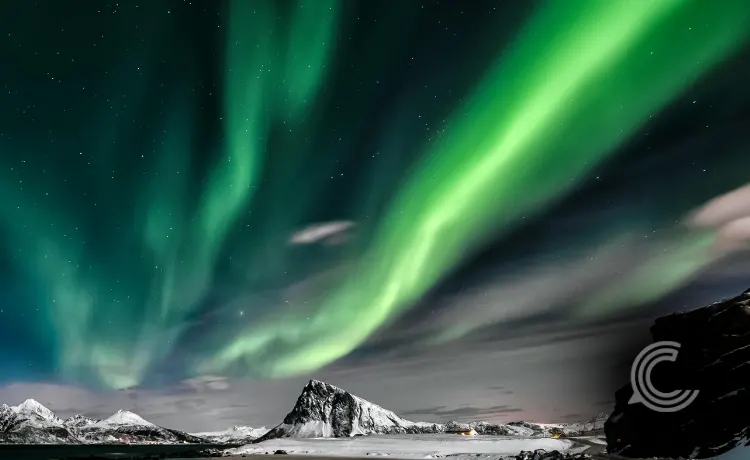When and How to Spot the Northern Lights in 20+ US States Tonight

Key Points:
- Enhanced solar storm activity makes the Northern Lights visible in over 20 US states, potentially reaching as far south as Alabama and Northern California
- The most intense displays are expected between 10 p.m. and 2 a.m. local time, coinciding with the darkest hours of the night
- A Severe (G4-class) Geomagnetic Storm Watch, issued by the NOAA, is driving this phenomenon, caused by powerful Coronal Mass Ejections (CMEs) from the Sun
A dramatic surge in solar activity has set the stage for a potentially historic viewing event, with the Northern Lights (Aurora Borealis) forecast to be visible across more than 20 U.S. states tonight.
This rare expansion of the auroral oval, typically confined to polar regions, presents a stunning opportunity for sky-gazers far south of the usual viewing latitudes.
The Science Behind the Southern Shift
The current spectacle stems from an extremely active Sun, now near the peak of its 11-year solar cycle. Specifically, a massive solar flare, one of the strongest of the current cycle, and its associated Coronal Mass Ejection (CME) have been launched directly toward Earth.
A CME is an eruption of billions of tons of solar material and plasma, which travels at millions of miles per hour. When this charged material reaches Earth, it interacts powerfully with our planet’s magnetic field, creating what is known as a geomagnetic storm.
The National Oceanic and Atmospheric Administration (NOAA) Space Weather Prediction Center (SWPC) has issued a G4 (Severe) Geomagnetic Storm Watch for the event. The severity level, which is rare, indicates a significant disturbance in the Earth’s magnetosphere. The energy transfer essentially supercharges the auroral oval, causing it to expand dramatically equator ward.
When and Where to Look Up
According to the latest forecasts, the best opportunity to see the Northern Lights will be during the darkest part of the night. Officials from the NOAA SWPC anticipate the strongest activity, and thus the greatest southern reach, to occur between 10 p.m. and 2 a.m. local time.
The states with the highest probability of dazzling displays are generally across the northern tier: Washington, Idaho, Montana, North Dakota, Minnesota, Wisconsin, and Michigan. However, the sheer strength of the G4 storm means the aurora could be visible on the northern horizon across many more states, including Oregon, Wyoming, Nebraska, Iowa, Indiana, Ohio, Pennsylvania, New York, Vermont, New Hampshire, and Massachusetts, as reported by The Hindustan Times.
Experts noted that aurora sightings could potentially reach as far south as Alabama and Northern California. The intense red and purple hues, often visible during severe storms, are caused by solar particles colliding with high-altitude oxygen and nitrogen atoms.
How to Maximize Your Viewing Experience
To witness the full grandeur of the Northern Lights, viewers must prioritize three main factors: darkness, a clear northern horizon, and patience.
First and foremost, viewers must escape light pollution. City lights can easily overwhelm and wash out the often faint, initial glow of the aurora. Drive away from urban centers to a rural area, a park, or a hilltop with an unobstructed view north.
Second, allow your eyes at least 20 to 30 minutes to adjust fully to the darkness. Avoid checking bright phone screens, as this will reset your night vision. Even if the display is not vivid to the naked eye, modern smartphone cameras often possess greater light sensitivity and can capture the greens and reds before they are easily discernible by human vision.
Patience is key. Auroras are dynamic and can appear suddenly, shifting in intensity and location throughout the night. Dress warmly, as nighttime temperatures will be low, making a long wait more comfortable.
For those interested in capturing this phenomenon, photography experts recommend using a sturdy tripod and a camera capable of manual settings. Set the camera’s focus to infinity, use a wide aperture (low f-stop number like f/2.8 or f/4), and experiment with a longer exposure time, typically between 10 and 20 second, via Visit Norway.
Protecting Infrastructure
While this solar event is a visual treat for the public, the strong geomagnetic storm presents challenges to technology. Geomagnetic storms can induce currents in power grids, potentially causing voltage irregularities. They can also disrupt high-frequency radio communications and degrade the accuracy of GPS and satellite navigation systems.



